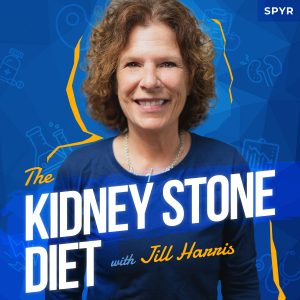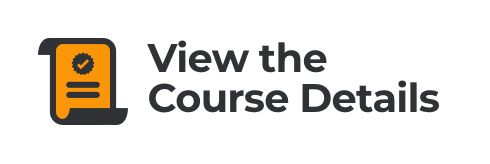In this episode of the Kidney Stone Diet Podcast, hosts Jeff Sarris and Jill Harris discuss the impact of breakfast choices on kidney stone formation. They emphasize the importance of varying breakfast foods to ensure a balanced intake of nutrients and to avoid high oxalate, sugar, and sodium levels. Jill shares insights on common breakfast items that may contribute to kidney stones and offers healthier alternatives. The conversation also highlights the significance of reading nutritional labels and making informed dietary choices to prevent kidney stones.
Takeaways
- Breakfast choices can significantly impact kidney stone risk.
- Variety in breakfast foods is essential for nutrient balance.
- High oxalate foods like chia pudding should be limited.
- Moderation in coffee consumption is crucial for kidney health.
- Many common breakfast items are high in sodium and sugar.
- Reading nutritional labels is vital for making healthy choices.
- Low added sugar and low salt options are preferable.
- Healthy breakfast alternatives can be delicious and satisfying.
- Meal plans can help guide healthier eating habits.
- Awareness of dietary habits is key to preventing kidney stones.
00:00 Introduction to Kidney Stone Prevention
00:04 The Importance of Breakfast Choices
07:23 Common Breakfast Mistakes and Solutions
Is Your Breakfast Causing Kidney Stones?
Jeff Sarris (00:00):
Is your breakfast causing kidney stones? Let’s talk about that.
The Same Breakfast Every Day
Jill (00:04):
Okay, so whenever I’m talking to private clients every single day, I always take a little diet intake. Like, “What are you doing for breakfast, Irene? Lunch, dinner? What’s a normal day look like?” So you can imagine, I hear all the things. And what I hear for breakfast is so common. First of all, y’all eat, you’ve heard me say it before, you all eat the same things every single day for breakfast.
And over the years I’ve said, “Could we mix it up, Buttercup, just a little bit. I’m not saying specifically oatmeal every single day. Oatmeal, oatmeal.” And you can say, “Well, Jill, I know what I’m having. It’s easy. I’m trying to get out the door.” I hear you. But could you at least mix up the toppings? Maybe one day you’re having raspberries on top. Maybe you’re having a little blueberry on top. At least change out the fruit. That’s all I’m saying.
Maybe you put some flax seeds in there. So change the toppings. That would make me happy. And if you’re saying, “I hate you right now, Jill.” Okay, keep your oatmeal, but just think about it. Could you do that for me? Anyway, here’s some.
Jeff Sarris (01:10):
And what’s the challenge if they are just sort of having the same thing every day like that?
Jill (01:14):
Well, they’re just not getting, let’s mix our nutrients around. Our body is so very complicated. There’s trillions of gut bacteria in our gut and they would like to be fed different things sometimes instead of the same old same old. So when we eat a variety of foods, and I’m not saying you got to have something different every day, but can you pick three or four different breakfasts that you just rotate, right? That’s all. That’s what I’m talking about.
Common High-Oxalate Breakfast Mistakes
Here’s things that are very common that people eat that are higher oxalate, too much sugar or too much salt. Chia pudding. People do it every single day and a lot of people use chia because it’s high in fiber, high in protein. So people are using that, especially vegans and vegetarians that have lower protein that are not getting enough protein because they don’t eat meat. So you could say, “But girl, chia was not even studied by Harvard,” but every other person out there who has studied chia seeds say they’re very high. So get rid of your chia pudding. I know that there’s all kinds of recipes on Instagram for it, not for you, Bernice, okay?
Coffee, but “Jill, you always say we could have a couple cups and Jill, you’re drinking coffee right now,” some decaf. Two cups of coffee a day, not 10, not 10 because it makes your urine acidic. Also, if you’re not replenishing with water, it’ll be more dehydrating for you. So stick to normal amounts of coffee and not Starbucks cups of coffee, 24 ounce. I’m talking two normal size cups, two cups of coffee a day.
A lot of you overused almond milk, cashew milk. Okay, those are done, no more of that. So you were doing, you were putting that as a base with spinach smoothies. So that was everyday “Jill, this is what I had for breakfast.” So I’m not making this up, I’m telling you what you all have told me over the years. So smoothies, the same smoothie every single day with almond milk or cashew milk, every single day.
“Spinach Jill, I would just stuff the blender with so much spinach, you couldn’t believe it.” Thousands of milligrams of oxalate, because one cup of spinach I think is 600, 700, 500, a lot of oxalate, okay? And you guys get 100 a day. So you can see what happened there. And also in that smoothie went almond butter. It’s another big one.
High-Sodium Breakfast Problems
So the other thing that you guys are eating for breakfast, you may be eating wheat bran. Your cereal has wheat bran as the first ingredient. High in oxalate. Salt and sugary breakfasts. Yogurts. Turn it around, Buster Brown. Look at your yogurts. We want low added sugar. Ideally zero added sugar. “Well, Jill, it tastes junky without it.” I use nonfat plain Greek yogurt and then I put a bunch of berries in there. “Blueberries are high, Jill, Harvard says.” I know, but I use all the berries so I’m not having too much of any berry. So in my Greek yogurt that has no added sugar, 18 grams of protein, I get the Target brand. It’s one of the cheapest out there and the highest protein. I will put blueberries, blackberries, raspberries, strawberries, and that’s what I will have. A cup, not of each. The whole thing is a cup. I like them frozen. And new research says that frozen blueberries even more increased antioxidants in there and they’re high if you’re eating a bushel of them. So just your whole cup of frozen berries this way they don’t go bad on you too with the Greek yogurt that has some calcium protein, gorgeous, no added sugar.
The sausage stuff that you’re having for breakfast people. Oh my goodness, 600, 700 milligrams of sodium. Common. “Jill. I don’t use a salt shaker.” I take the dietary intake. “Well, Jill, I have four or five pieces of sausage.” And I will say on the phone, “Sally, go get the sausage pack.” “Jesus, Jill, why’d I pay this money to talk to you?” “Sally, go get it.” She gets it. I say, “Turn it around.” She’s like, “Oh my God.” You don’t think about it, folks. You don’t think about it. If you don’t have hypertension, if you don’t have heart disease, you are not paying attention to salt.
How the Food Industry Works
And the food industry certainly isn’t saying anything about it. The food industry has really changed a lot of their practices because people on keto begged for it. And so you will see lower sugar everywhere. But when they make a thing, a food, that has lower sugar, they’re stuffing it more with salt. Because in focus groups, they put people around, they’re like, “Try this, we did low salt and low sugar on this one.” “It’s disgusting.” “Here’s low sugar, but more salt.” “Much better.” So.
The food people have to answer to Wall Street. And if nobody’s buying their product, they’re in trouble. So people will say, “Well, the food industry should do this, this and this.” Stop buying those products that are unhealthy. And if you do that, they will readjust. Just like keto really forced the food industry to get rid of that extra sugar. They did a marvelous job with it. Why? Because they’re wonderful and care about our health. That would be no. No, because we all demanded it and labels changed.
More Breakfast Salt Traps
But so for salt, many of you, a very high sodium breakfast. Bagels, so much salt, so much salt. In my meal plan, I have like zero sodium bagels, okay? Higher protein too. So I’m just saying there’s ways to get around this stuff. You don’t have to. English muffins high in salt. I’m just saying. So there’s things with the breakfast. Typically they’re too high in oxalate with the almond stuff and the chia pudding and the smoothies, okay? And then the salty sausages, eggs and all that stuff because they are salting their eggs, not that eggs are salty. Or, you know, Egg McMuffin, 700 milligrams of sodium. Who would think you could get that much sodium in that little McMuffin? It’s amazing. So always look at your labels.
Breakfast is one of those things that you may be, that you may not be thinking about that definitely helped making a new kidney stone. If you want great breakfast ideas, we have a meal plan at kidneystonediet.com. You get hundreds of recipes, breakfast, lunch, dinner, and a snack every single day sent to your email every Sunday with ideas and inspirations. I write all the notes on why I used what I use. There’s substitutions for every lifestyle. They’re all low added sugar, if any added sugar, low salt. Oxalate’s all figured out. You can’t beat it for the price, folks.
Jeff Sarris (08:25):
Yeah. And if you actually don’t already know about why we’re talking about salt, sodium, why we’re talking about sugar, why we’re talking about acidic urine even like the Kidney Stone Diet, all of the goals of the kidney stone diet are right at kidneystonediet.com. You can sign up for the free weekly newsletter where Jill sends you an email every weekend to keep you on track, but you can find absolutely everything to prevent future kidney stones at kidneystonediet.com. And I think with that, it’s a good spot to wrap for this week. I think that really, that was good because breakfast is a big challenge for people, especially when…
Jill (09:02):
It is. Yes.
Jeff Sarris (09:02):
They want to prevent future stones. But I think that will wrap and we’ll see you next week.
Jill (09:07):
Bye everybody.














Leave a Reply